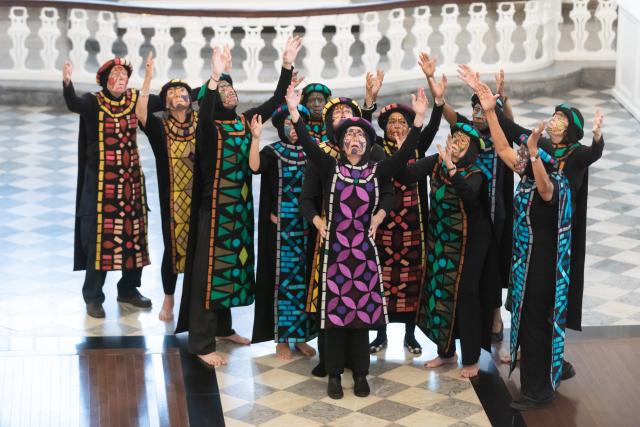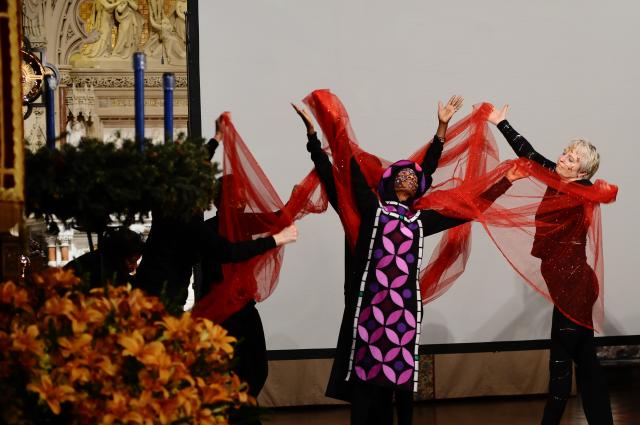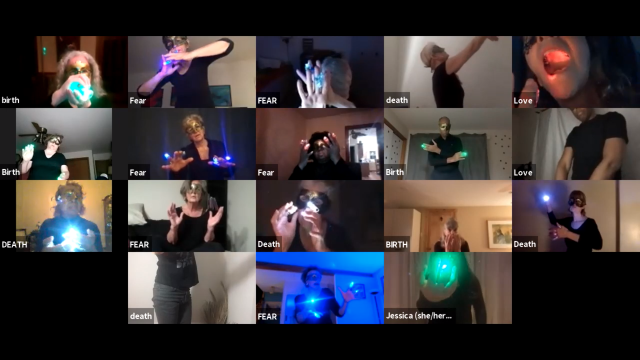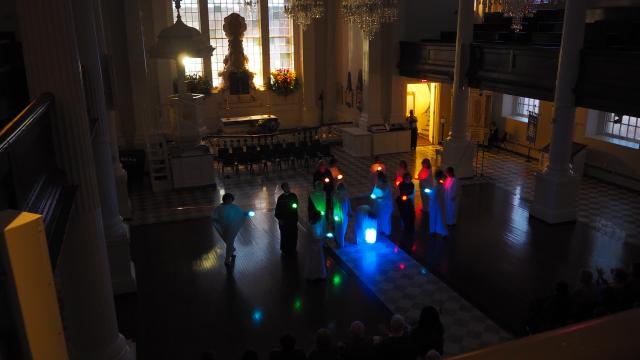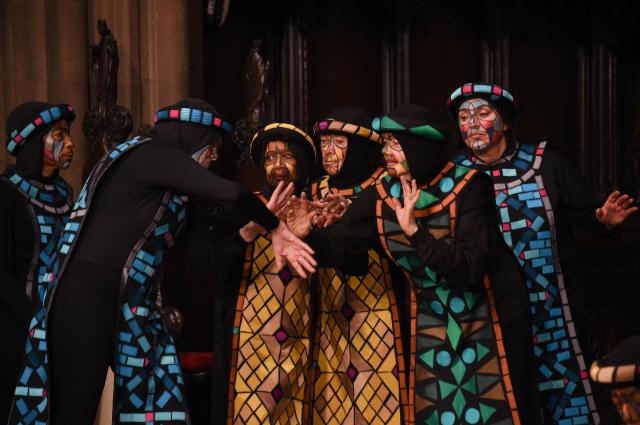Heart to Heart: Trinity's Movement Choir
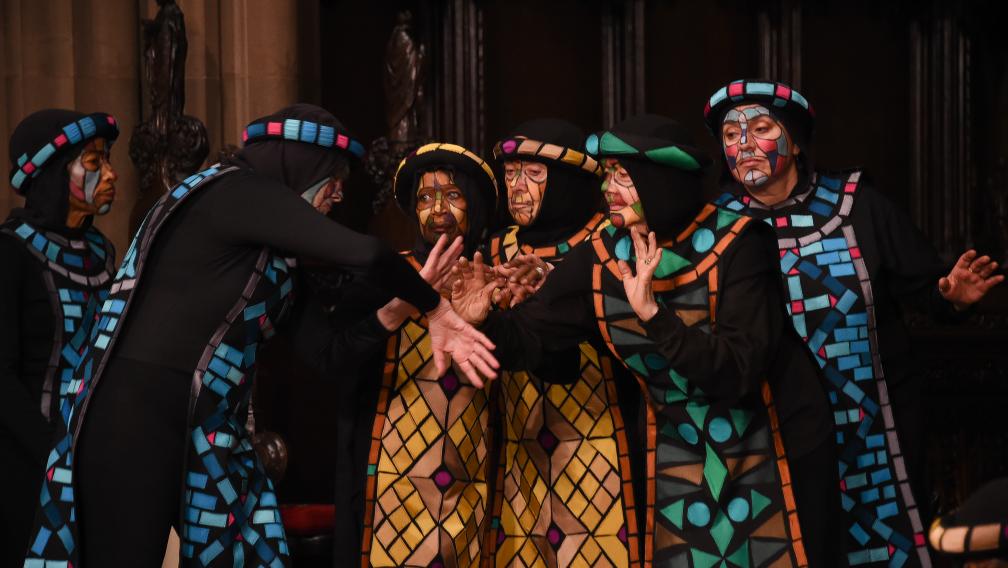
Marilyn Green was preparing for The Creation, scheduled for Friday, March 20, 2020, which she expected to be the “most gorgeous dance” ever for Trinity Movement Choir.
“And then, boom. Closed,” Green recalls.
By the COVID-19 pandemic.
“I felt extremely distressed. Then I realized this was the time to dance. This was not the time to stop.”
Green and the Movement Choir, the dance troupe she helped organize 11 years ago, went virtual.
Green began to investigate Zoom— “about which I knew nothing”— and soon learned that, even virtually, “the dancers could connect their hearts.”
“They felt that same bond and same connection they feel when they’re physically together. Time and space don’t really interfere with spiritual connection.”
The Movement Choir began at Trinity Church Wall Street in the days leading up to the tenth anniversary of the attacks on the World Trade Center, as the church organized a week-long series of events and commemorations with the theme “Remember to Love.” The presentation at that time was titled Reconciliation.
The dancers who participated agreed to continue to dance together.
“My degrees are in music and painting, but I always did dance,” Green said, acknowledging that she was most influenced in the development of the Movement Choir by butoh, a style of Japanese modern dance.
“Intense, extremely slow motion, which is a lot harder than it looks, is at the heart of the Movement Choir style. Non-professionals and professionals together can create dance that is extremely beautiful and extremely useful for the heart.”
About 50 people are members of the Movement Choir. Before the pandemic, a performance would include between 12 and 18 dancers, and since COVID that number has risen to about 27. The level of training or ability doesn’t affect acceptance in the group.
“I didn’t put any guidelines out for people to join the Movement Choir. I don’t care if you’re using a walker. We’ve had people as young as five-years-old; people as old as in their 90s. We’re looking for open-hearted people, and the dancers have ranged from former stars of major dance companies to people who have never danced publicly before.”
Since the pandemic, Trinity’s Movement Choir has staged The Way of the Phoenix and Elements of Creation. In April, there will be another performance of The Doors, first presented in November 2013. The work borrows from William Blake, Aldous Huxley, and Jim Morrison, with a focus on birth, death, fear, and love. The performance will feature new original music by renowned jazz musician and composer Reggie Workman.
“Why are we doing it again? All of our work is continuous,” Green explained.
“When the audience sees something, it is not a culmination, it is a point on the development. And I thought, how well suited to right now. Everybody is so volatile. Particularly when the issues of the pandemic explode into racial justice and poverty and the other nightmares we went through at the same time,” Green said.
After almost a year of the challenge of creating art amid the pandemic, Green considers especially fortuitous the appearance on February 18 of legendary dancer and choreographer Judith Jamison at a Trinity Commons online event.
“Her work with the Alvin Ailey American Dance Theater, and its programs for young dancers, along with The Jamison Project, leaves a legacy even beyond Alvin Ailey's own, opening a door for generations of Black dancers and choreographers,” Green said.
Green is particularly excited that Trinity parishioner Toni Foy, who recruited so many of the original members of the Movement Choir in 2010, interviews Judith Jamison.
“I can’t think of a better pairing. Toni is so well-grounded in everything that makes the arts magnificent and so completely familiar with Judith’s work.”
Looking forward, Marilyn Green sees the Movement Choir performing both in person and on virtual platforms.
Whether in person or virtual, "[dance] crosses the barriers of culture, gender, of prejudice. If it’s done from the heart, it goes right into the heart.
“If it doesn’t transform the audience and the dancers, it’s a failed dance. If it does, it’s completely successful.”






